On a cold Thursday evening I find myself climbing the vertical ladder that leads up into the belfry of St Giles Church, a tower that has stood sentry over those entering Oxford from the north since the 13th century. The rungs stop just short of the upper platform and so for the last leg, I am instructed to find a V shaped gap in the joists on which to balance, before hauling myself up to where the church’s eight bells are nestling. It’s a scary moment. But I am here at the invitation of John Pusey, who for over ten years has held the magnificent title of Captain of the Tower. And he is leading the way. As chief bell ringer and general man in charge, he’s done all this a thousand times before. Besides there is no way I can confess to my trepidation when by the time I reach the top, two other ringers, Geraint and his thirteen year old son Marc have already clambered down beside the bells, untied the clappers (to un-silence them) and are heading back down the ladder with the agility of mountain goats, ready to begin today’s ringing practice.
“It’s what keeps us fit and healthy,’ smiles John, who at 83 is a good advertisement for the pastime. Looking down on the vast metal castings like old friends, he fills me in on their history. There were only four bells in St Giles in its early days, but when the heaviest bell fell and cracked it was recast, the other three had the same treatment in 1850 and two more were added, and the number increased to eight in 1927. In 2011 after complaints that the bells were not sounding as they should, they were shipped off to Whitechapel Bell Foundry (the old city location now sadly bought by a boutique hotel chain) to be tweaked and then rehung by the local firm White’s of Appleton. So now they are in fine fettle, each tuned so that together they play a full scale like the white notes on a piano.
The deepest in pitch, the tenor, is the heaviest weighing two thirds of a ton, the same as a small car. Along the rim it carries the words ‘FEARE GOD HONAR THE KING 1632’, so must have rung out even as King Charles 1 mustered his troops in the nearby University Parks when Oxford was his Royalist capital during the English Civil War. Two others have inscriptions in Latin, translated as ‘I that am struck am called Katherine, a rose of the world’ and ‘Let the sound of Giles ascend the heights of heaven’. These inscriptions were transferred from predecessors which had been cast during times when it was common for church bells – having voices, and therefore being felt to be almost alive – were often dedicated to saints, through formal religious ceremonies similar to baptism. “This is more common on the Catholic continent,” John informs me. “ Our later bells were given the names of Anglican canticles!”
Safely back down in the chamber below and a good number of enthusiasts are gathering for today’s session of what is called in the trade full-circle change bell ringing. It’s a uniquely English invention, practised in the 7,000 odd towers of the English-speaking world, the majority of which are in Britain. (John by the way has rung in 2,000 of these.) On the continent the bells are rung randomly producing a cacophony of banging and clanging in no apparent order. But here they are played more musically, evenly and rhythmically. Starting from an upside-down position each bell is rung through a full circle and then back again. This is done by means of a long rope attached to a wheel, which the ringer must learn to control. If you let go of the rope the bell can continue to ring wildly on its own for up to six minutes. But once mastered you are able to take part in the more complicated ‘ringing the changes’, which means in coordination with other ringers and in a variation of patterns. A full peal, a series of changes without repetition using all the seven bells of St Giles’ Church with the heavy tenor striking at the end, lasts about three hours and will consist of over 5,000 changes. A big ask and performed only by the most experienced ringers on special occasions like the coronation. John has rung 31 full peals at St Giles, two of them as conductor.
But his priority is to welcome in and develop new recruits. “Anyone who can ride a bike, and beat time to a tune, should be able to learn,” he insists. With eleven other towers in Oxford doing the same thing, they need a steady influx of new blood if Oxford is to retain its familiar soundscape. The numbers at St Giles seem healthy enough but looking around the room apart from Marc (he’s from a bell-ringing family, his sister rings at Exeter Cathedral) it’s an older demographic. John, like Marc, started early at the age of 14, in his father’s church in North Worcestershire. Having the bells in use were an established part of his village communal way of life, and taking part in this was at first his way of contributing a service. It still is. “Not only getting the bells rung, as well as possible, when required and appropriate, but also teaching others, so that the tradition and skills involved in English-style change-ringing can be passed on to future generations,” he says. As he got older he also became attracted by the chance to explore and learn to understand the intricacies of a complex tradition; the reasons why things in ringing are given certain names, or done in certain ways – depending on quite subtle combinations of memory, logic, visual observation, and listening, as well as physical skills.
“It’s very satisfying when you get it more or less right’ admits John.
This is harder than you might think. For you play your instrument unseen, with only a small hole connecting your rope to the bell above, the sound coming half a second after pulling on the cord. Watching everyone else and then listening to create the steady rhythm needed is key, demanding a high level of concentration evident on the faces of the ringers tonight, as John belts out instructions like “Look to, Treble’s going” or “Go, Grandsire”, a fascinating secret language understandable only to those in the know. They stop only briefly to change places, adjust the length of their rope, to fetch or to remove a ‘box’ to stand on.
And what a huge and wonderful sound they create together. As the old rhyme goes ‘There is no music played or sung, Like unto Bells when they’re well rung’. And well rung they are. It is these very bells that inspired John Betjeman to compose “Before the Anaesthetic’ while awaiting an operation and contemplating the existence of God across the road at the then John Radcliffe Infirmary in 1945. Written in a regular eight syllables to each line to match the rhythm of the bells: “St Giles’s bells, they richly ring’, he evokes a feeling of melancholy that only a slow sonorous toll can: ‘Intolerably sad, profound, St Giles’s bells are ringing round.’
But it is a joyous sound we hear tonight – cascading chimes that fill the air and lift the heart. It must have been on a Thursday night such as this that another poet, Seamus Heaney, on one of the last ever visits he made to Oxford asked his friends on St Giles if they might throw open the windows as they supped, so they might listen to the free concert emanating from the Church across the way. Bells certainly have the power to stir the emotions. So as Christmas approaches and the ringing out becomes more urgent, I encourage everyone who like me is privileged to live nearby, or close to any church that has ringers like John and his band, to follow Heaney’s example and do the same .
Contributing photographer John Milnes took pictures on two separate occasions: first, of the bells during the light of day, and then of the ringers during a Thursday evening practice session.
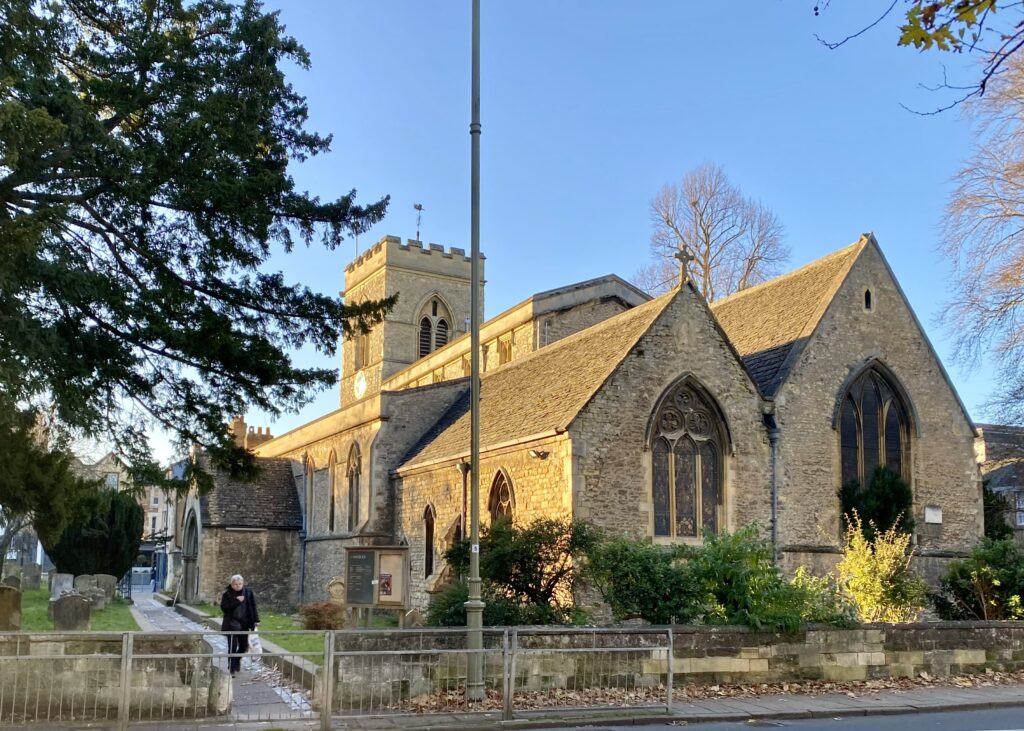
The Church of St Giles, with the tower to the west. John chose to ring here partly because it was his nearest church with eight bells (more challenging than four or six), but also because John’s father was born in the parish. His grandmother regularly attended services after she was married in 1890.
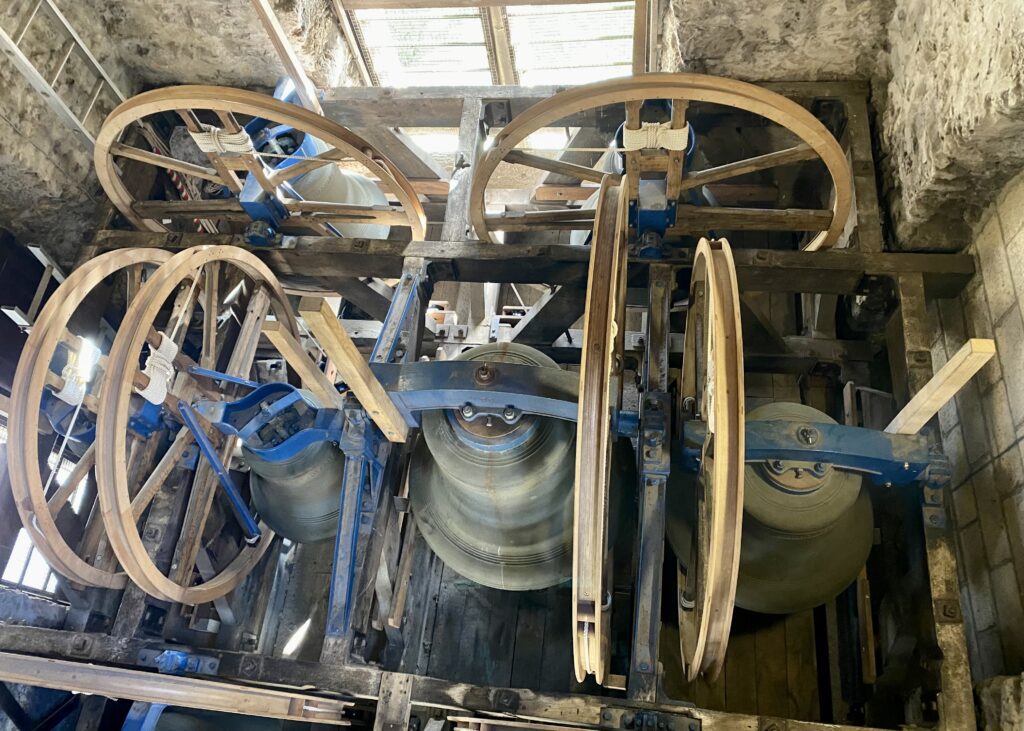
The church’s eight bells are hung to ring in descending order, the tenor comes in last, as its sound is the loudest and most long lasting. Towers have different numbers of bells, Christ Church Cathedral for instance has twelve.
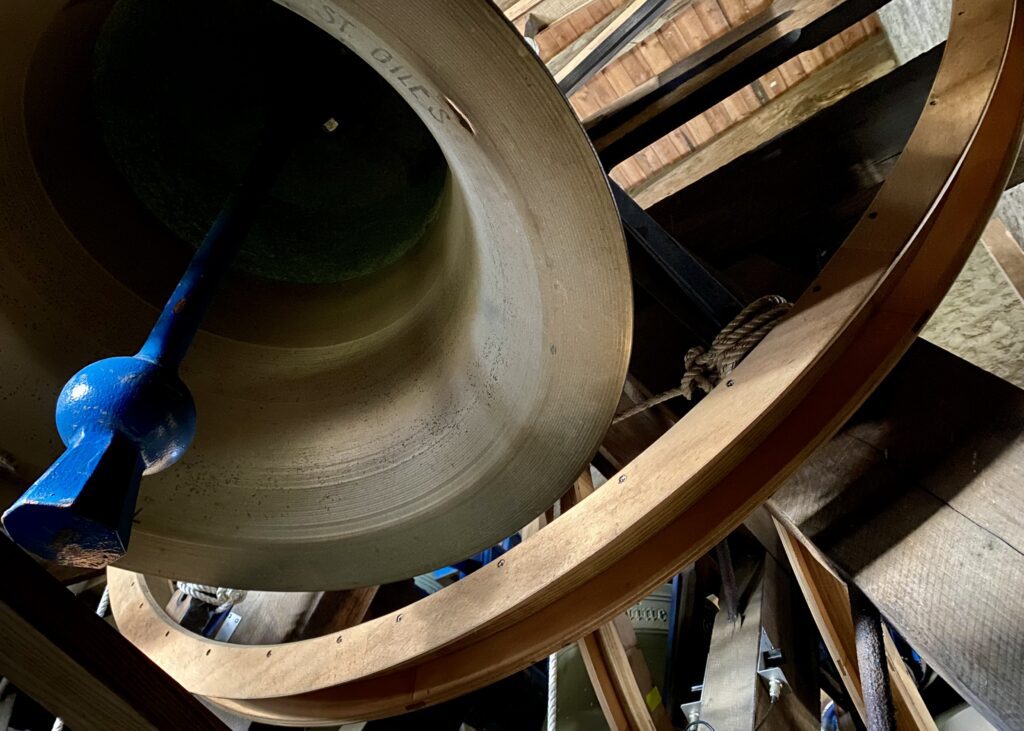
The bell named after St Giles
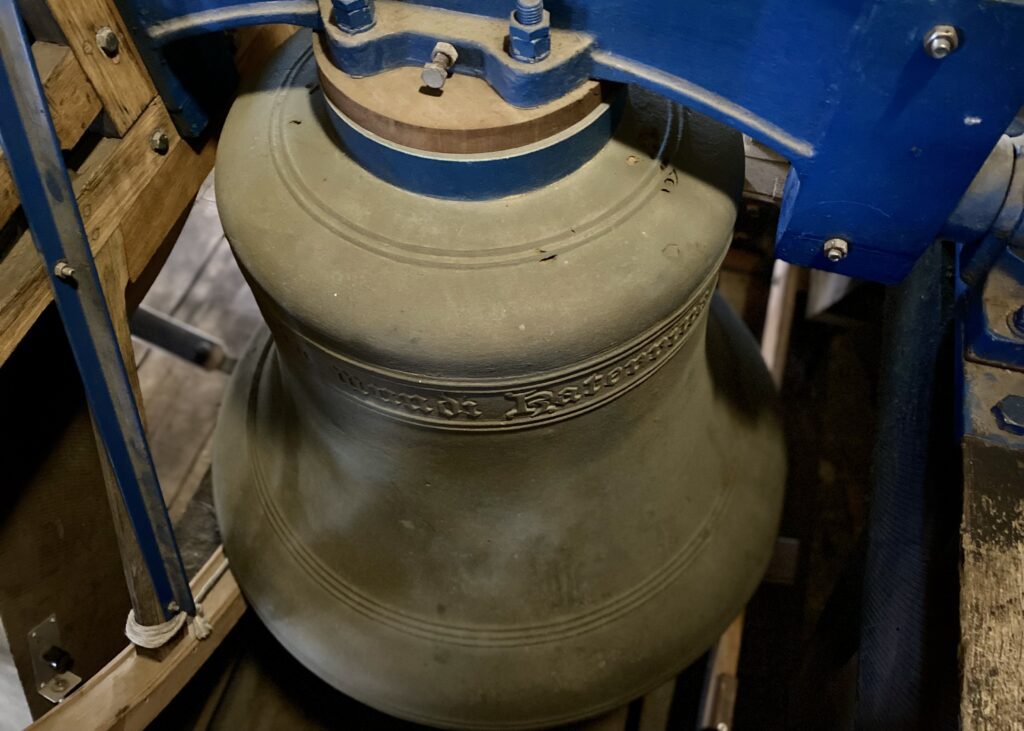
The bell named after St Katherina
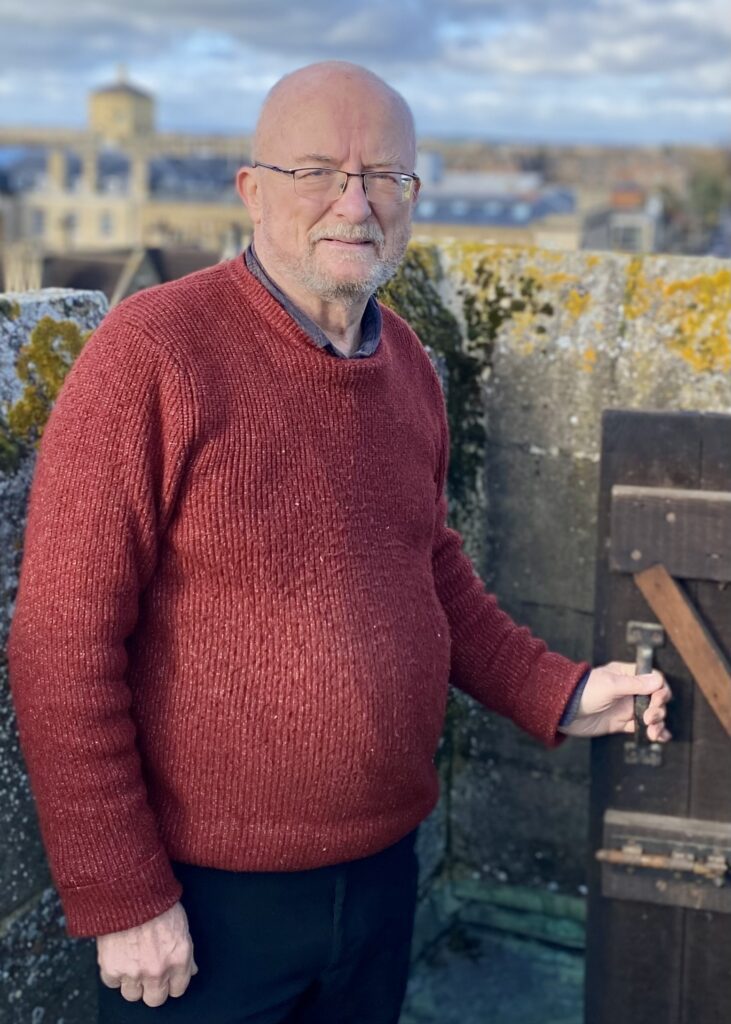
Captain John Pusey, standing atop his tower, with the Radcliffe Observatory behind.
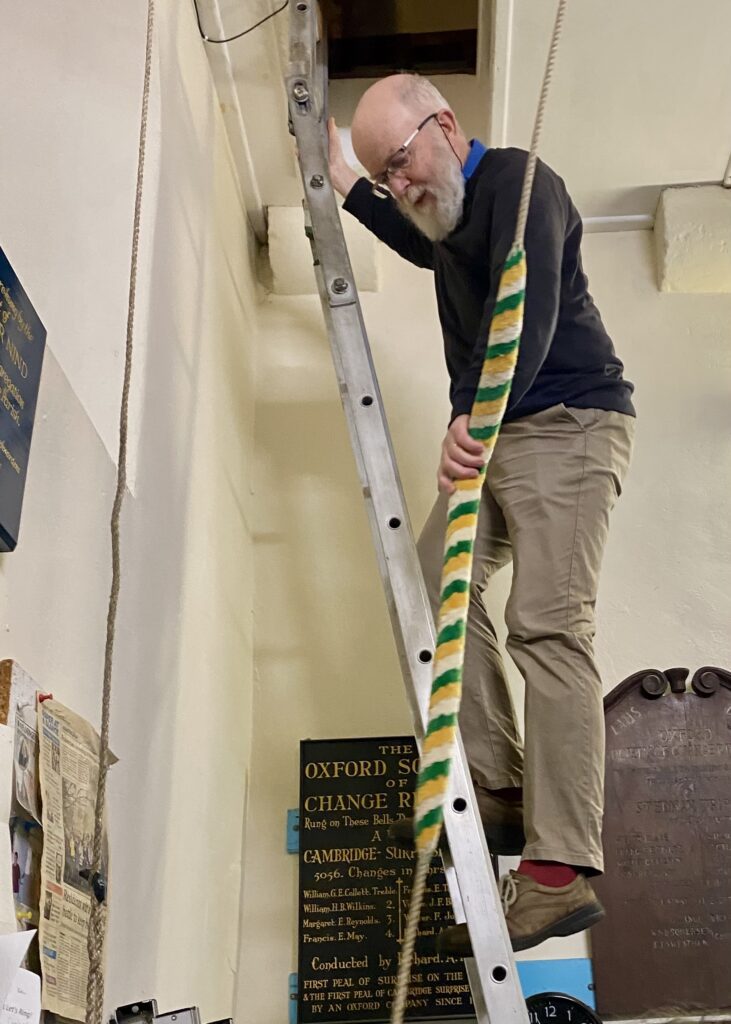
Geraint Jones descending the second ladder after un-silencing the bells above.
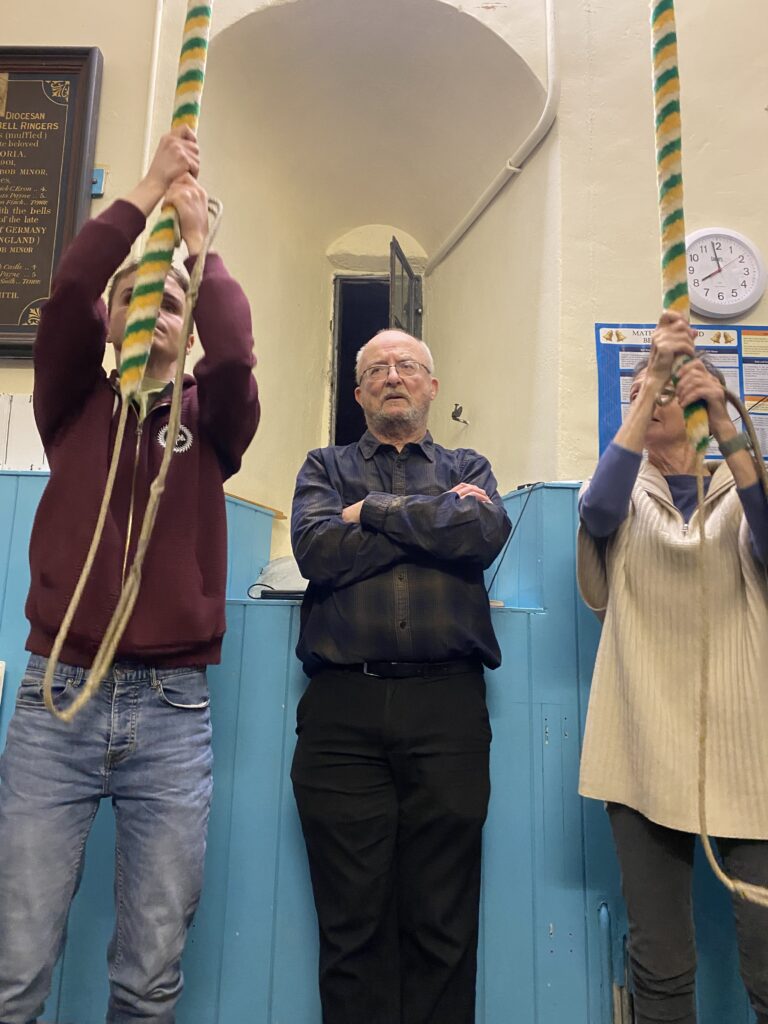
John as ringing master.
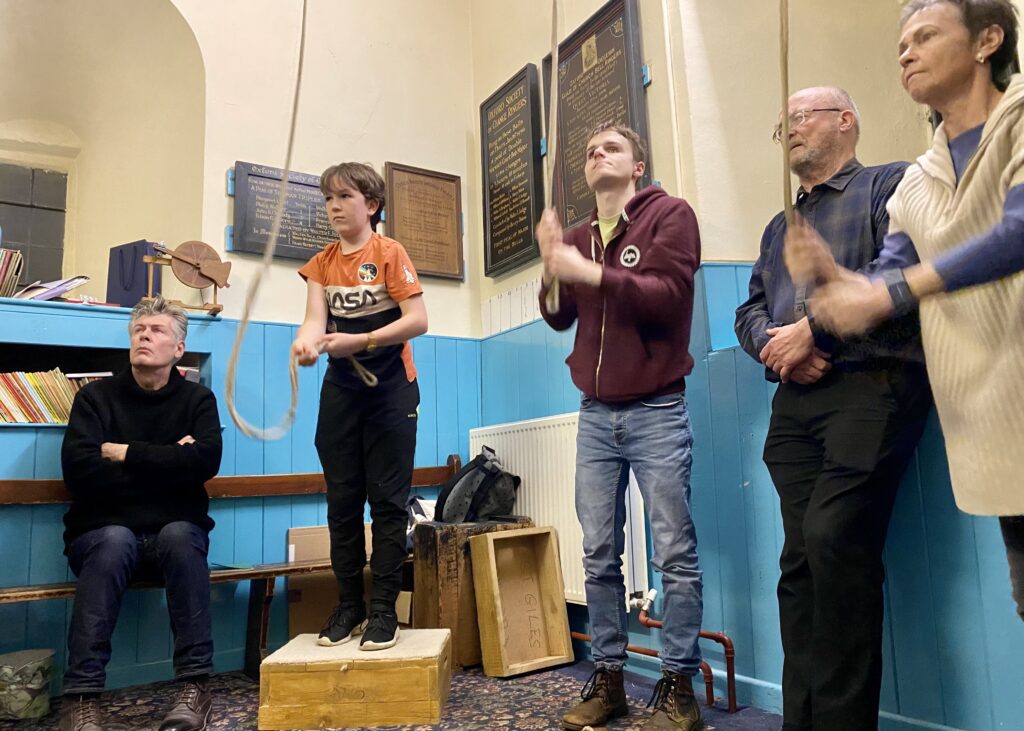
The band of ringers – Marc needs a box so the rope is easier to manage.
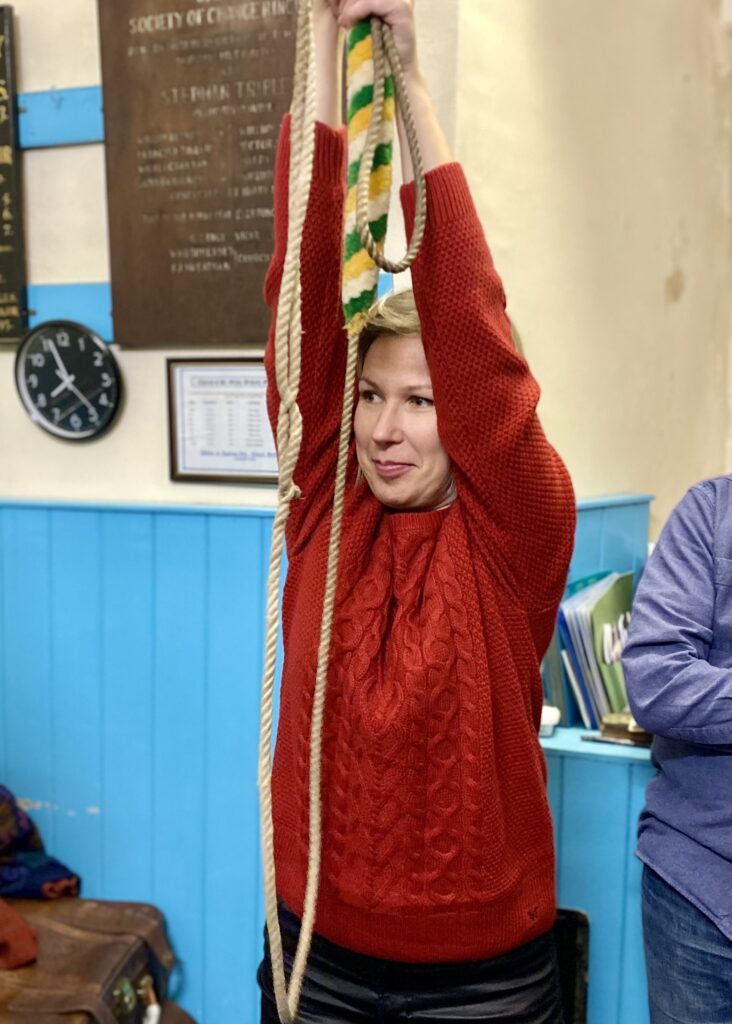
A member of the band. The tufted part of the rope is known as the “sallie” or “sally”, which is some four feet from the end of the rope.
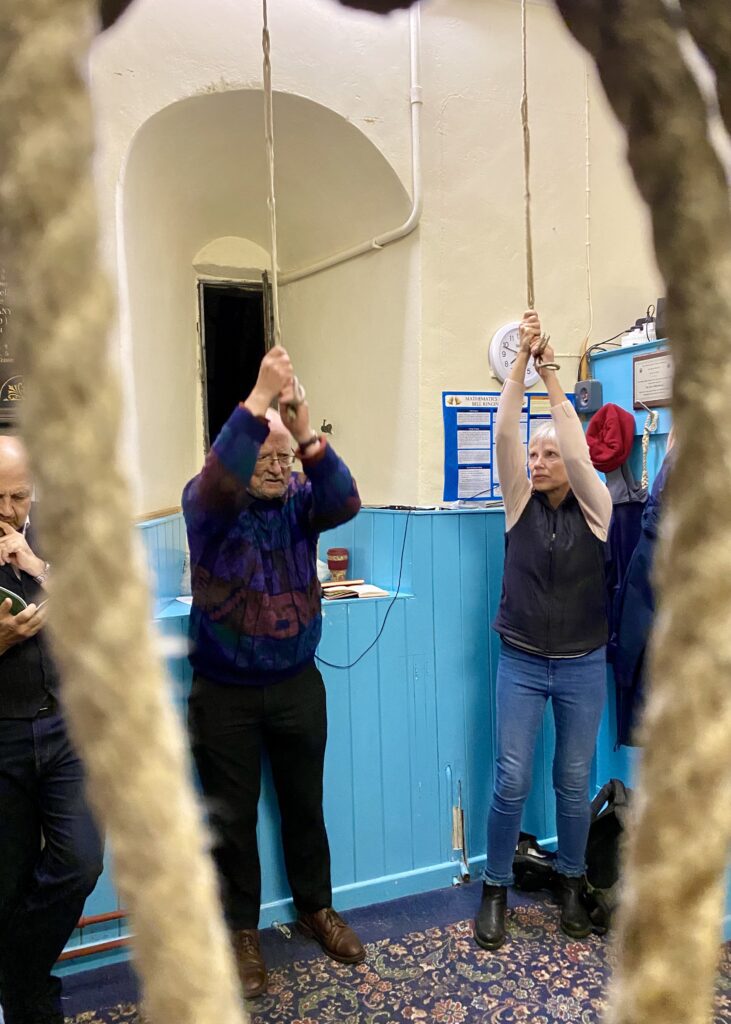
John working as Captain.

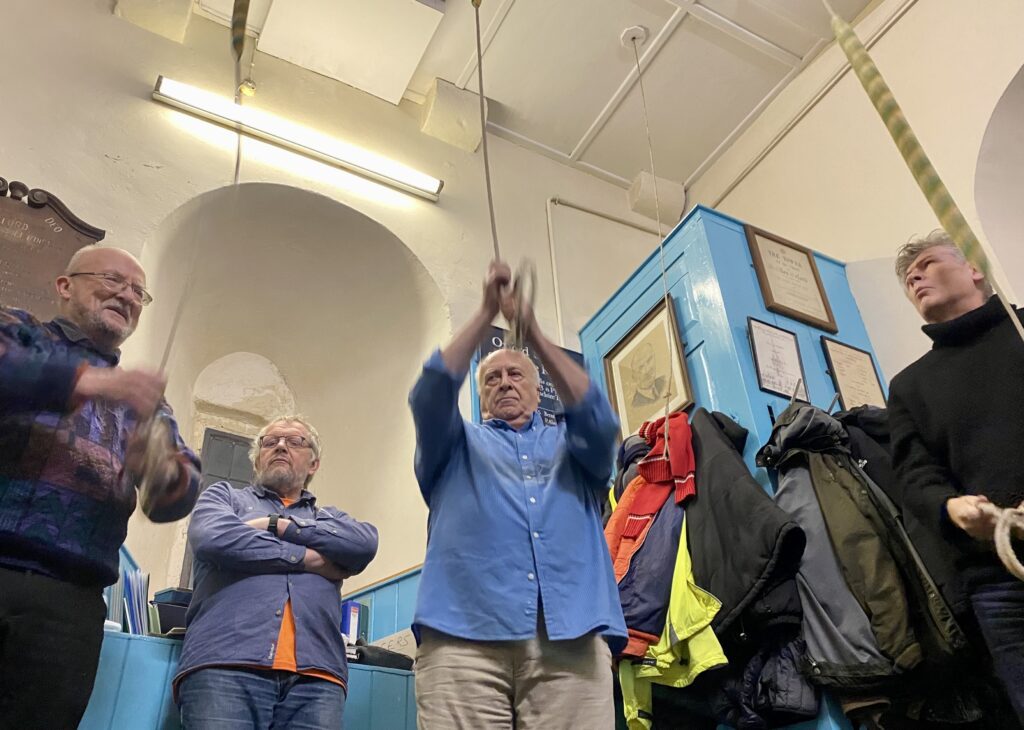
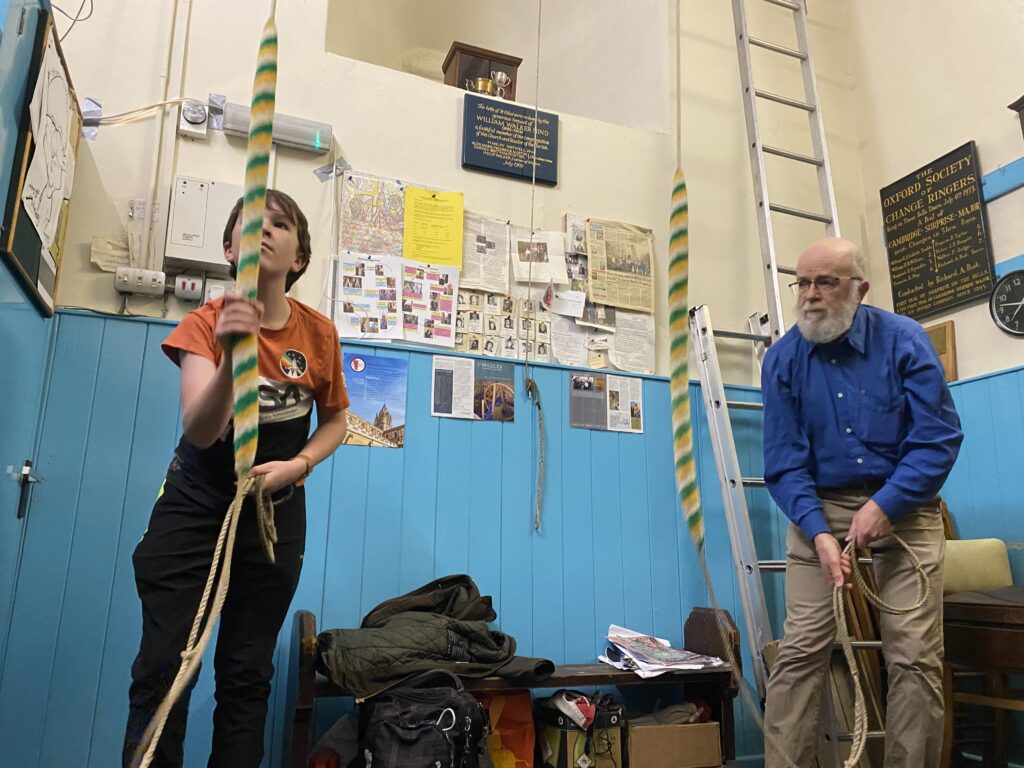
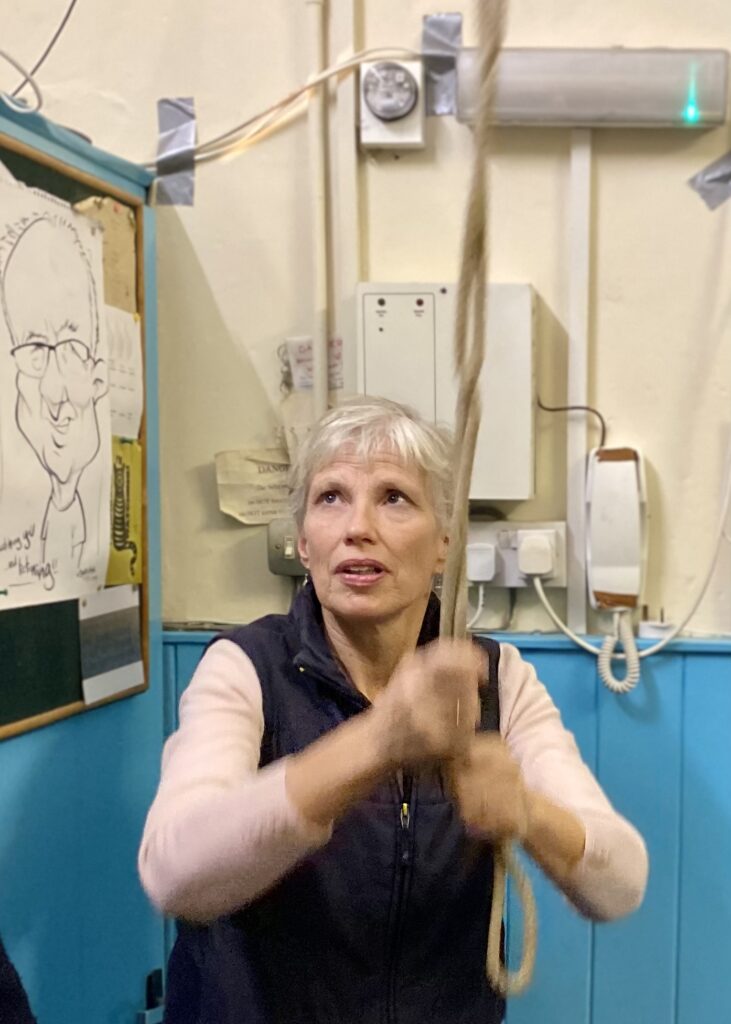
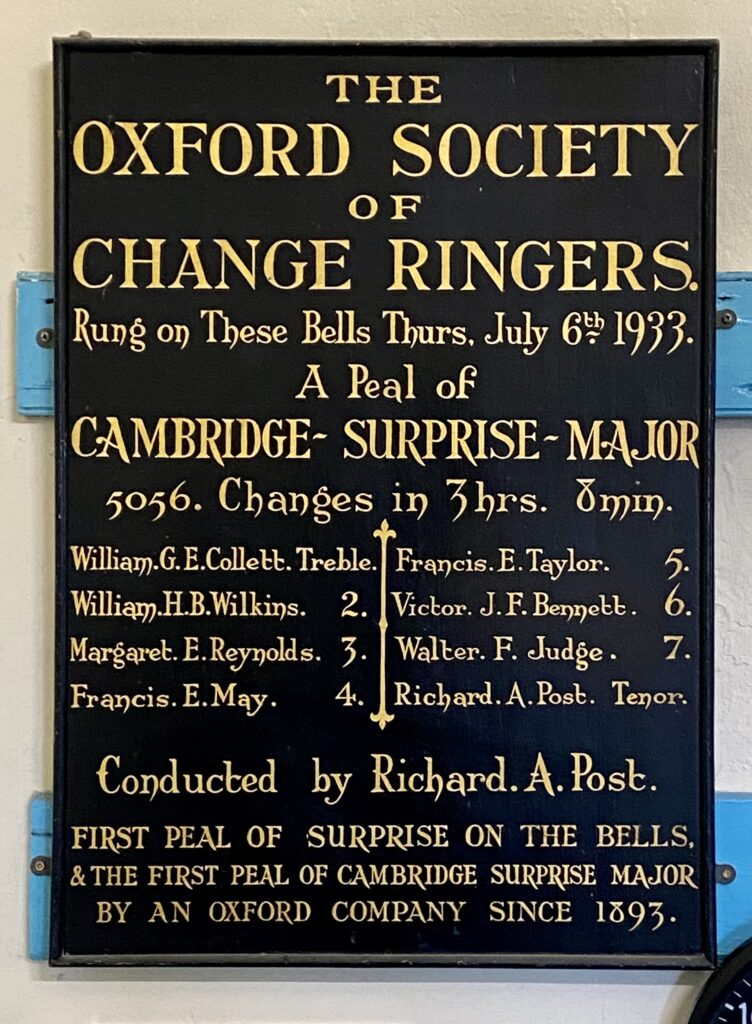
There are lots of plaques memorialising great ringing occasions in the bell tower. This one celebrates the peal of Cambridge Surprise achieved soon after the church gained its eight bells in 1927. John has invented his own changes. One he named Voyager after one of the early space probes because he reckoned it was going into new territory. He has yet to persuade anyone to ring it. There are several different methods named after Oxford including Oxford treble bob, and Double Oxford.
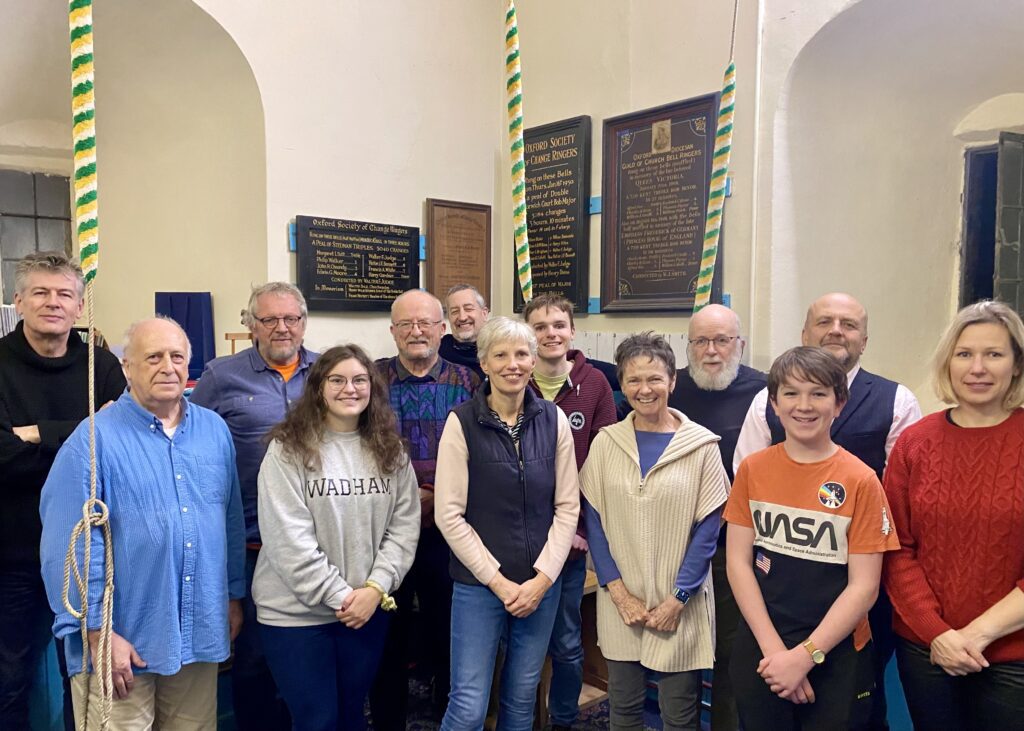
The St Giles band of bellringers at Thursday evening practice. These include a blind ringer and a refugee from Ukraine. John is in the middle.
If you are interested in learning how to become a bellringer then all are welcome to join other beginners at 6.30pm every Thursday evening. You can contact John for more details at johnguypusey@hotmail.com
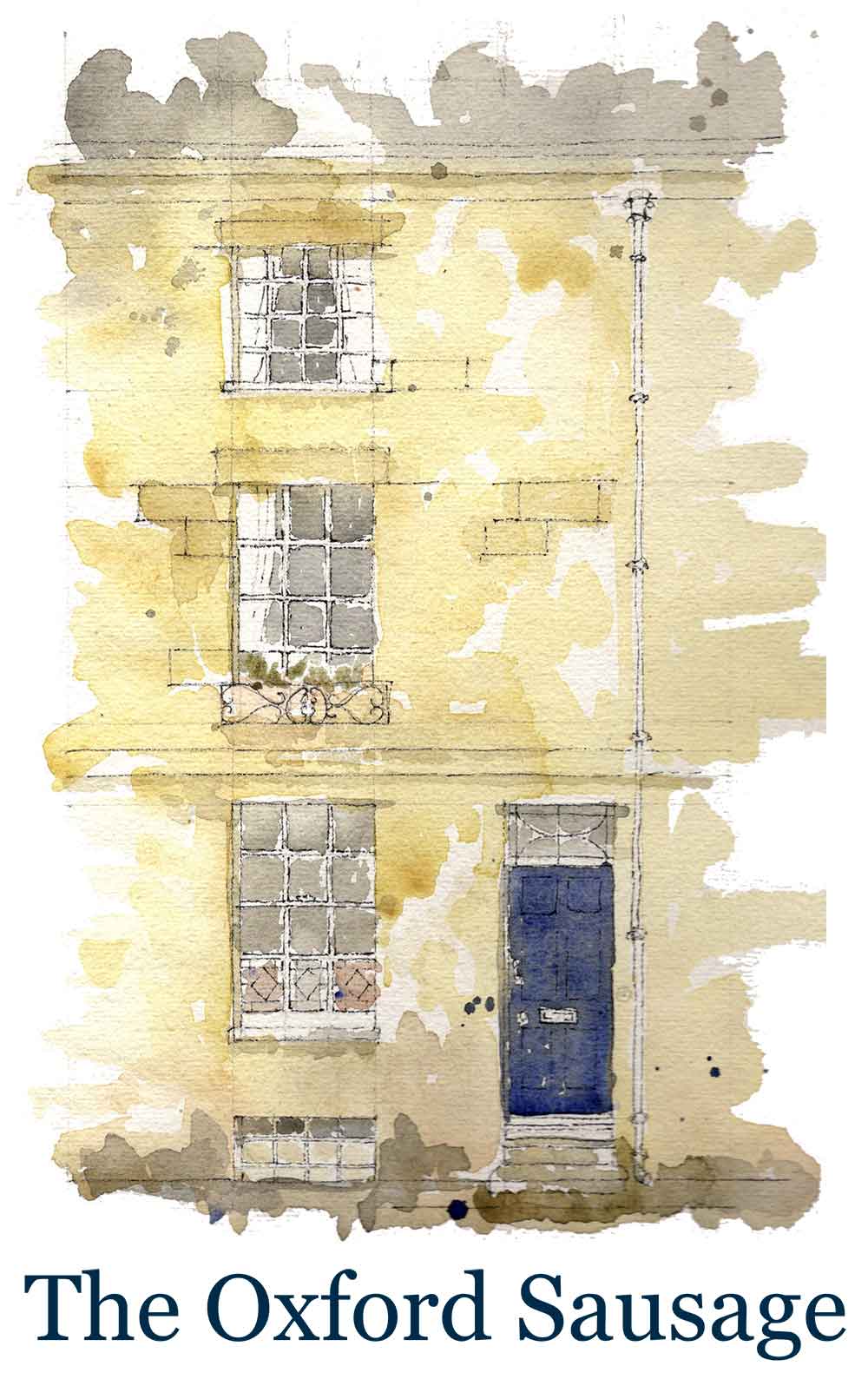
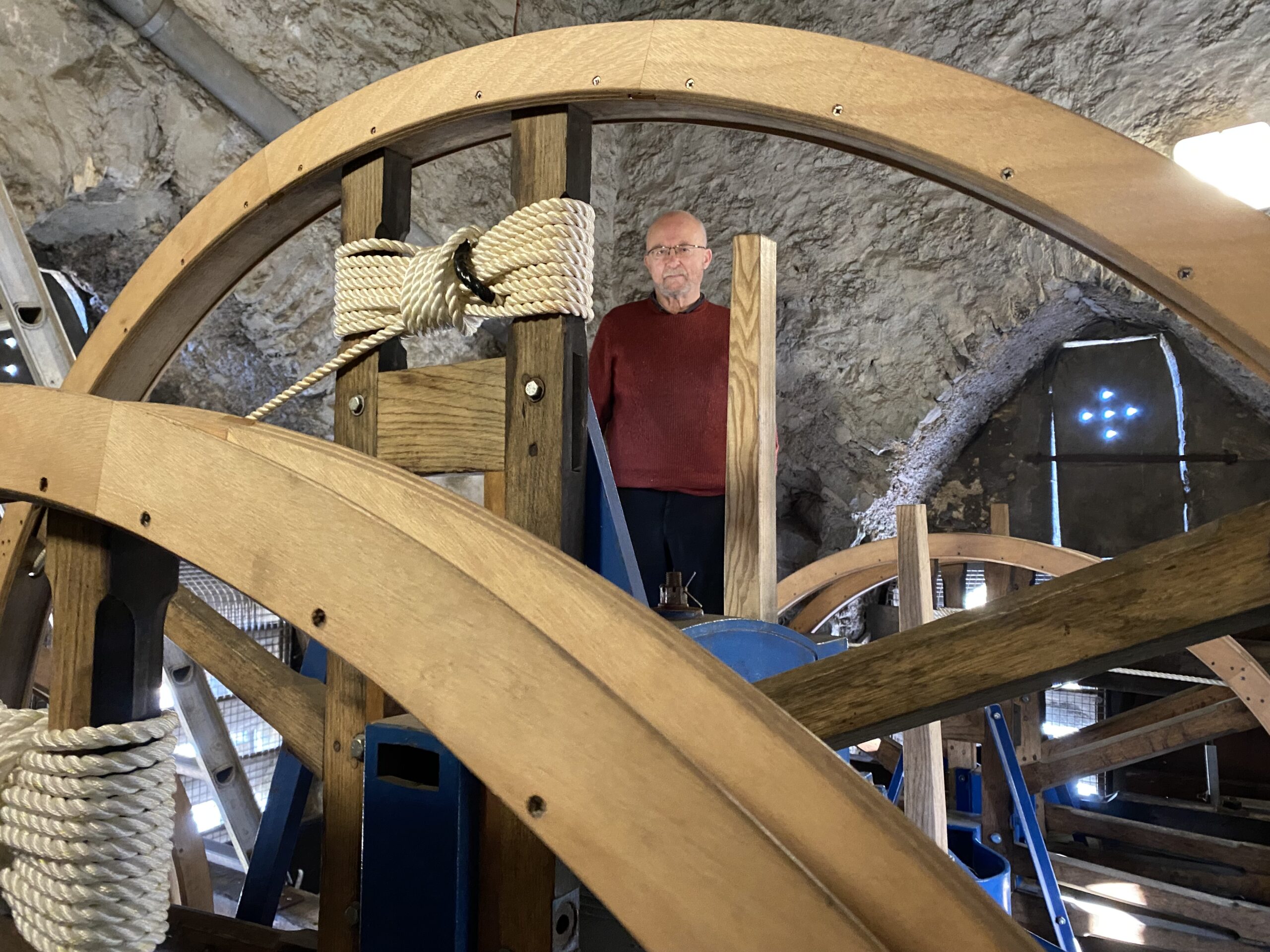
4 Comments
Join the discussion and tell us your opinion.
Oh thank you for this fascinating post. It is wonderful to see that the ancient British tradition of bell ringing is carried on by the St Giles bellringers under the leadership of John Pusey. The descriptions you provide of the change ringing and the bell names remind me of Dorothy Sayers’ Nine Taylors, but carried out in real life (minus the mystery!). And the history you tell of the bells’ “tweaking” at the Whitechapel Bell Foundry reminds us again of what a great loss that is. I only wish I lived closer to Oxford to come learn this fine musical art with such a dedicated group of ringers.
Thank you for your splendid article and photos. John Pusey was my landlord 1981-1982 while I was writing my doctoral dissertation at Oxford. I didn’t have time to learn to ring, but he took me up to watch a peal, and since then I’ve always loved to hear the bells. John is a bell ringing evangelist, teaching others and spreading the wonder and beauty. A wonderful man.
Thanks for this post! I spent six months this year in Oxford and was curious about change ringing when I came past by St Giles. I contacted John Pusey whether it’s possible to have a look – it was a very warm and welcoming atmosphere. And so, instead of having just a look, I went there every Thursday evening and I was taught the very first basics of this fascinating tradition. It was a wonderful experience!
[…] The Captain of the Tower […]